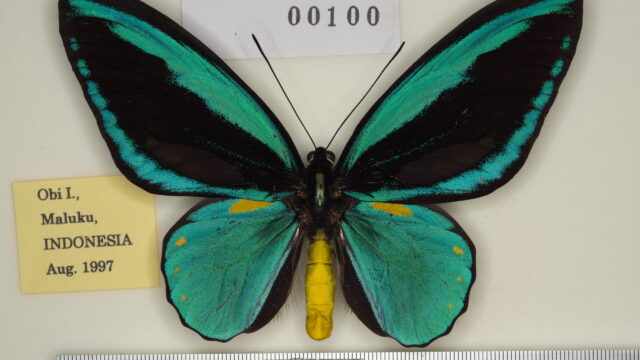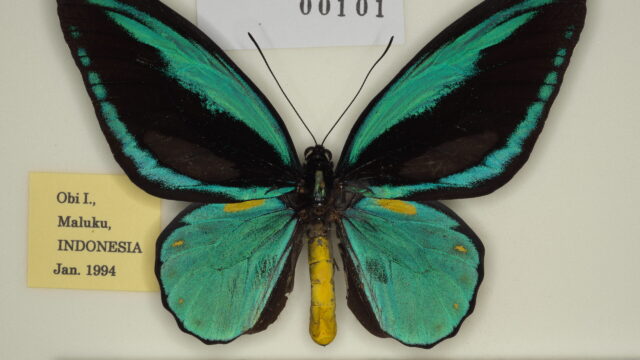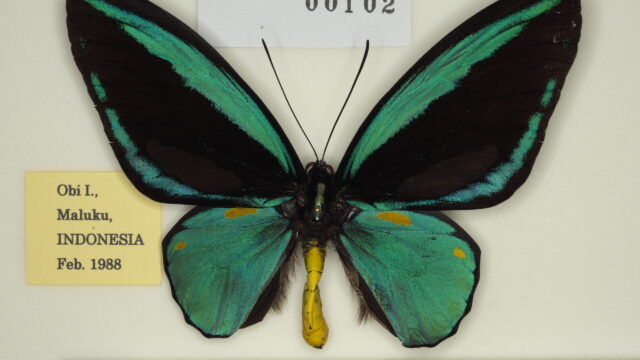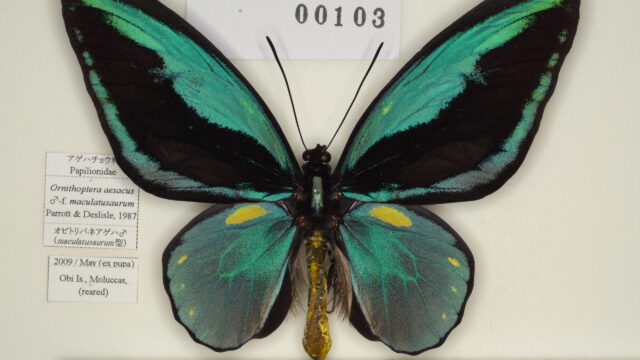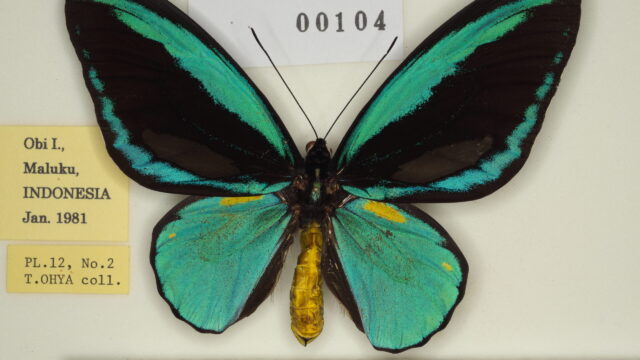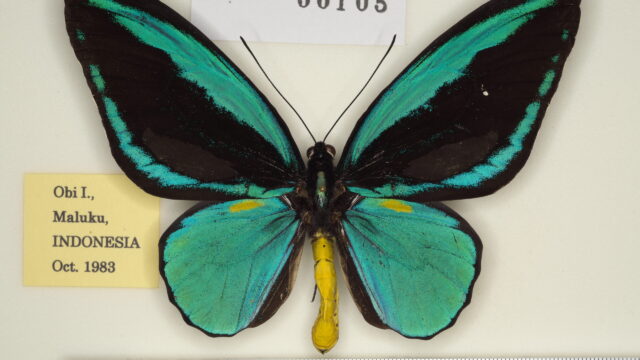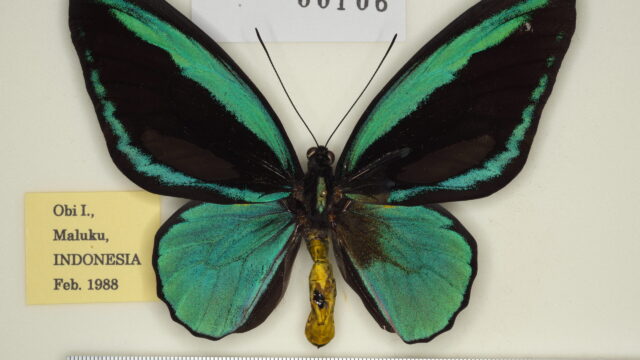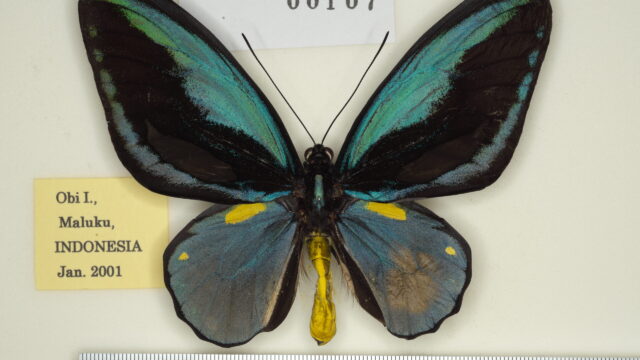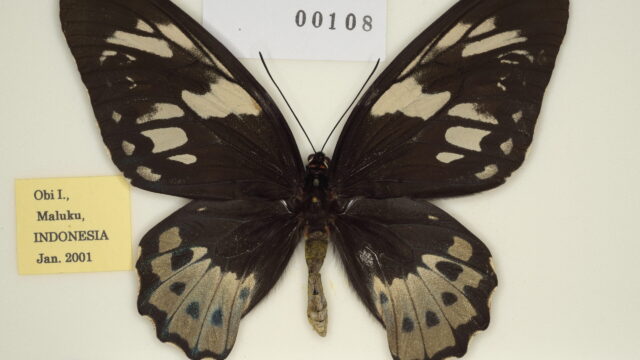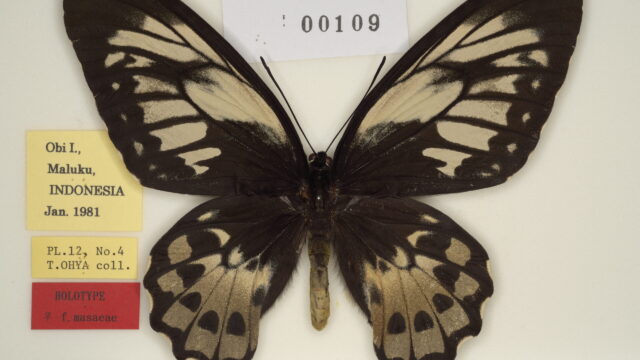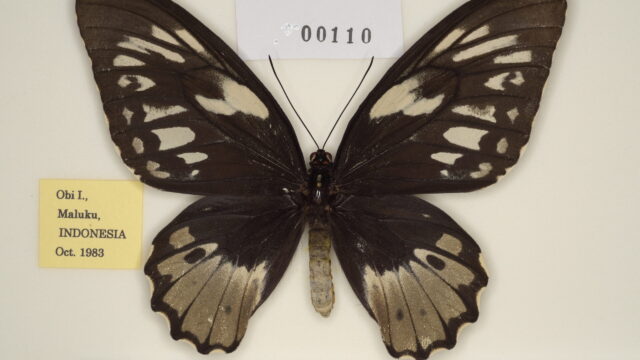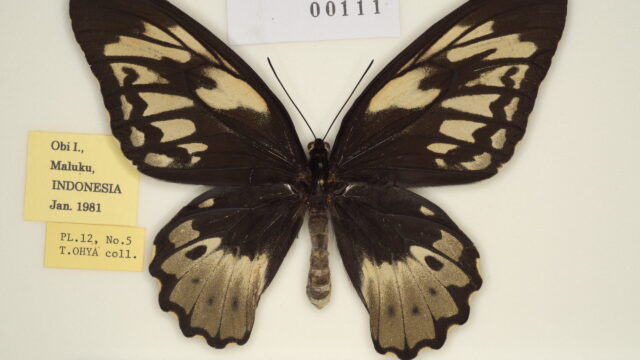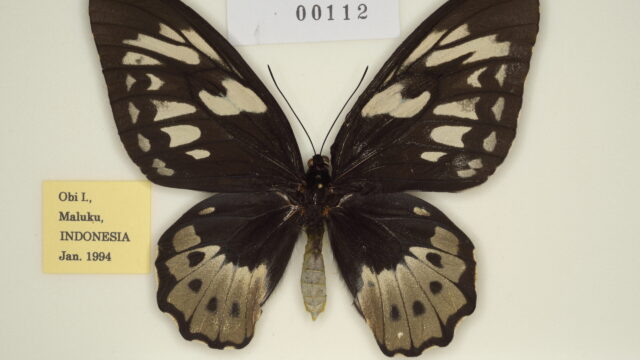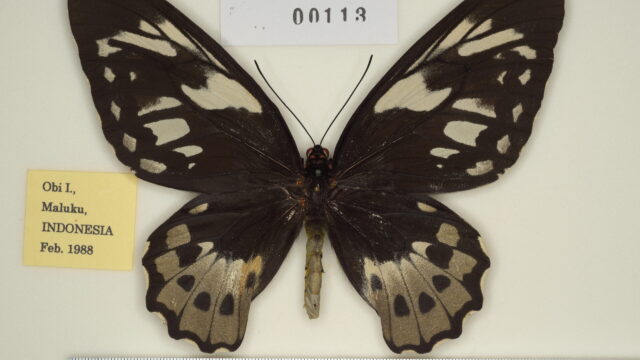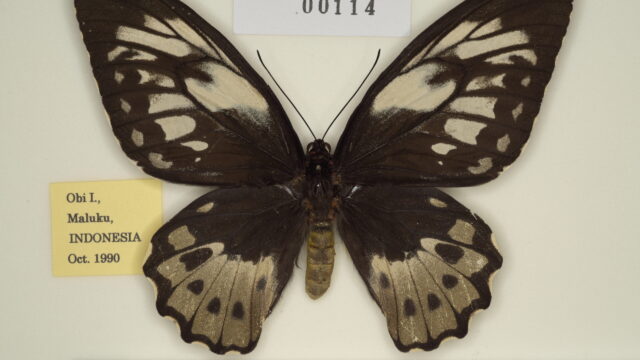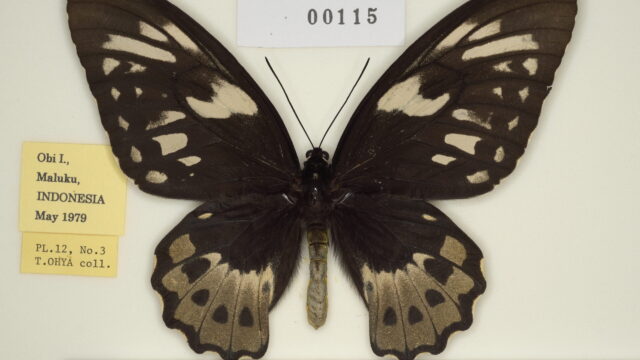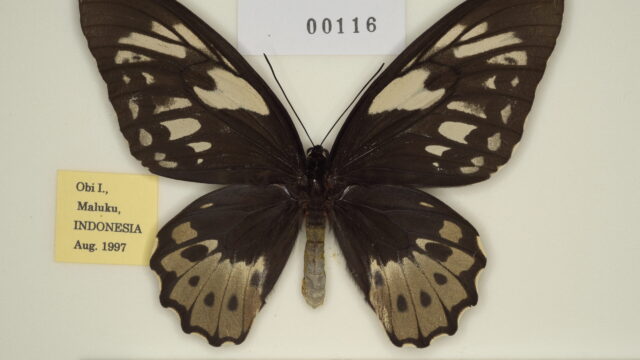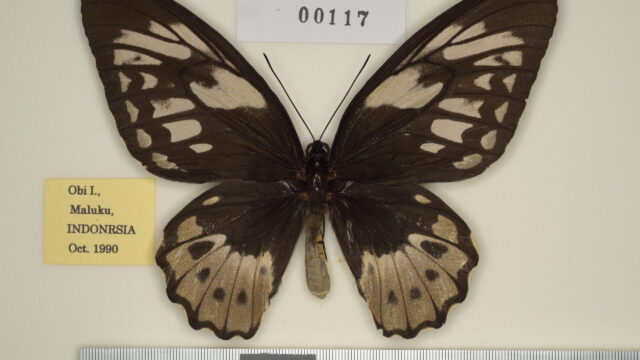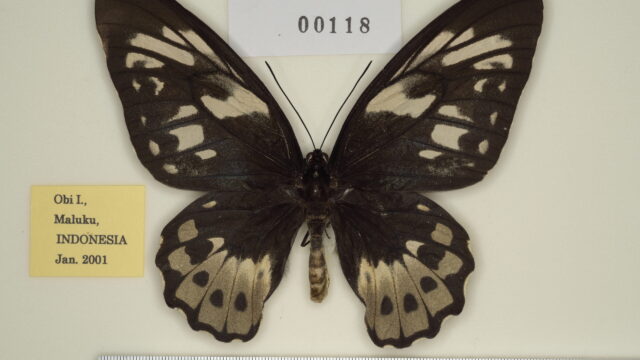Sp. aesacus (Ney, 1903)4) [♂, ♀]
= obiana (Watterstratt) (Rebel, 1906)7) [♂, ♀] (Obi Is.)
(Distribution) [DCD 5], [Map 9]
INDONESIA [Maluku] Obi Is. (Wai, Sum), Tobalai Is.
(Vertical Distribution)
Unknown.
(Episodes of discovery and original description)
According to the original author Ney (1903), the first specimens were collected by Waterstradt on Ovi Island in the spring and summer of 1902 and were reared from larvae in May of that year. The specimen, together with a vast number of other specimens, was sent to Hermann Rolle, a well-known specimen dealer in Berlin, who gave Ney one ♂ and three ♀♀ specimens. He considered the butterfly to be a close relative of O. priamus, although it undoubtedly belonged to the Priamus group, and gave it the species name aesacus (the name of the eldest son of King Priamus).
On the other hand, the specimens on which Rebel’s (1906) description is based were also collected by Watterstratt (wrong spelling of Waterstradt), one pair of which was purchased by Steindachner (probably from Rolle) and donated to the Hof Museum, Vienna.
(Characteristics)
This species is unique in that it is found only Obi Island and the neighboring Island, Tobalai Is. At first glance, it resembles O. (O.) priamus, but is characterized by the absence of the black discal spots on HW of ♂. It has reddish hairs on its bilateral thorax, as with other species.
(Spotted pattern)
♂: Patches have a distinctive bluish green coloration, and the radial band of FW is rather broader than in sp. priamus. HW is round and no spot except for a few semi-translucent golden spots on the submarginal region. The abdomen is yellow.
♀: Spots of FW/HW are large and creamy. This is characterized by the absence of yellow scales on the submarginal regions of both sides on HW.
(Variation)
♂-f. maculatusaurum Parrott & Deslisle, 19876) [Aberrant FW pattern] Presence of one semi-translucent golden spot subcostally within radial band.
♂-f. claudei Deslisle & Sclavo, 20152) [Aberrant FW pattern and FW/HW discoloration] Same pattern of ♂-f. maculatusaurum, but the color of the patches of both wings is grayish.
♂-f. nadiae Deslisle, 19951) [Aberrant FW pattern] The broad radial band and its hook shaped part invading the apical region of the cell.
♂-f. christophi Deslisle & Sclavo, 20152) [Aberrant FW pattern] Mixed type of ♂-f. maculatusaurum and ♂-f. nadiae. The broad radial band with a hook-shaped part invading the apical region and one or more semi-translucent golden spots.
♂-f. hudsoni Deslisle & Sclavo. 20152) [Aberrant FW pattern] In addition to the above variation (♂-f. christophi ), several semi-translucent golden spots further appear in the cell and the hook-shaped part, and moreover only the radial band is green.
♂-f. viridari Deslisle & Sclavo, 20152) [FW/HW discoloration] Iridescent green coloration, instead of typical bluish green.
♂-f. azurus Deslisle & Sclavo, 20152) [FW/HW discoloration] Iridescent bright blue coloration, instead of typical bluish green.
♂-f. solioccassus Deslisle & Sclavo, 20152) [FW/HW discoloration] Obscure grayish green with reddish iridescence, instead of typical bluish green. Could be artificial discoloration due to humidity or temperature.
♀-f. tenebricosa Parrott & Deslisle, 19876) [Aberrant FW/HW pattern] Greatly reduced all pale spots.
♀-f. masaeae Ohya, 19955) [Aberrant FW/HW pattern] Pale area greatly enlarged and the pale band of HW is wide, spreading into the apex of the cell.
♀-f. purpurea Sumiyoshi, 19898): The pale band with bluish sheen on the HW upper side.
(Larval foodplant)
Aristolochia gaudichaudii 3).
